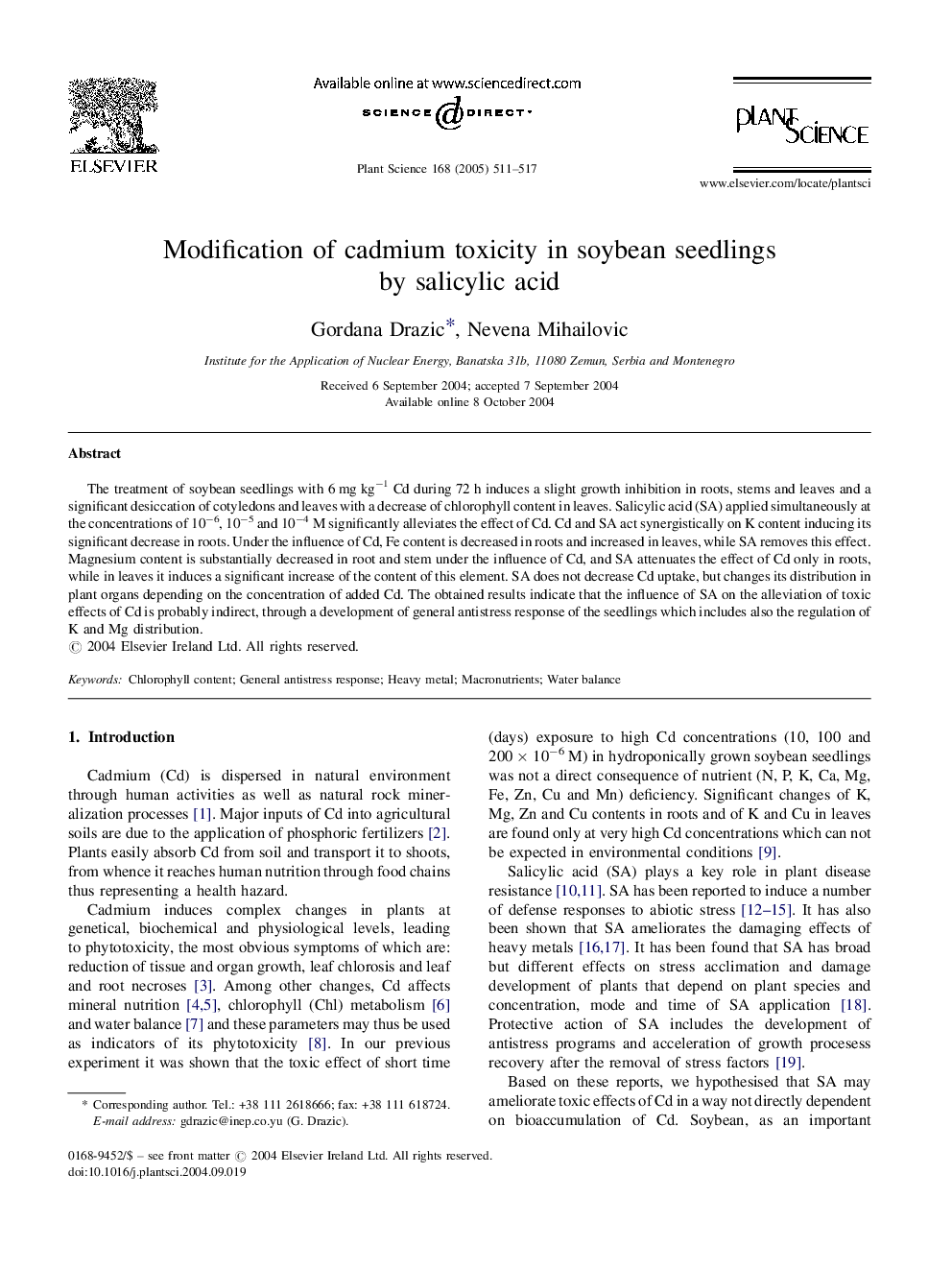| Article ID | Journal | Published Year | Pages | File Type |
|---|---|---|---|---|
| 10840799 | Plant Science | 2005 | 7 Pages |
Abstract
The treatment of soybean seedlings with 6 mg kgâ1 Cd during 72 h induces a slight growth inhibition in roots, stems and leaves and a significant desiccation of cotyledons and leaves with a decrease of chlorophyll content in leaves. Salicylic acid (SA) applied simultaneously at the concentrations of 10â6, 10â5 and 10â4 M significantly alleviates the effect of Cd. Cd and SA act synergistically on K content inducing its significant decrease in roots. Under the influence of Cd, Fe content is decreased in roots and increased in leaves, while SA removes this effect. Magnesium content is substantially decreased in root and stem under the influence of Cd, and SA attenuates the effect of Cd only in roots, while in leaves it induces a significant increase of the content of this element. SA does not decrease Cd uptake, but changes its distribution in plant organs depending on the concentration of added Cd. The obtained results indicate that the influence of SA on the alleviation of toxic effects of Cd is probably indirect, through a development of general antistress response of the seedlings which includes also the regulation of K and Mg distribution.
Related Topics
Life Sciences
Agricultural and Biological Sciences
Plant Science
Authors
Gordana Drazic, Nevena Mihailovic,
